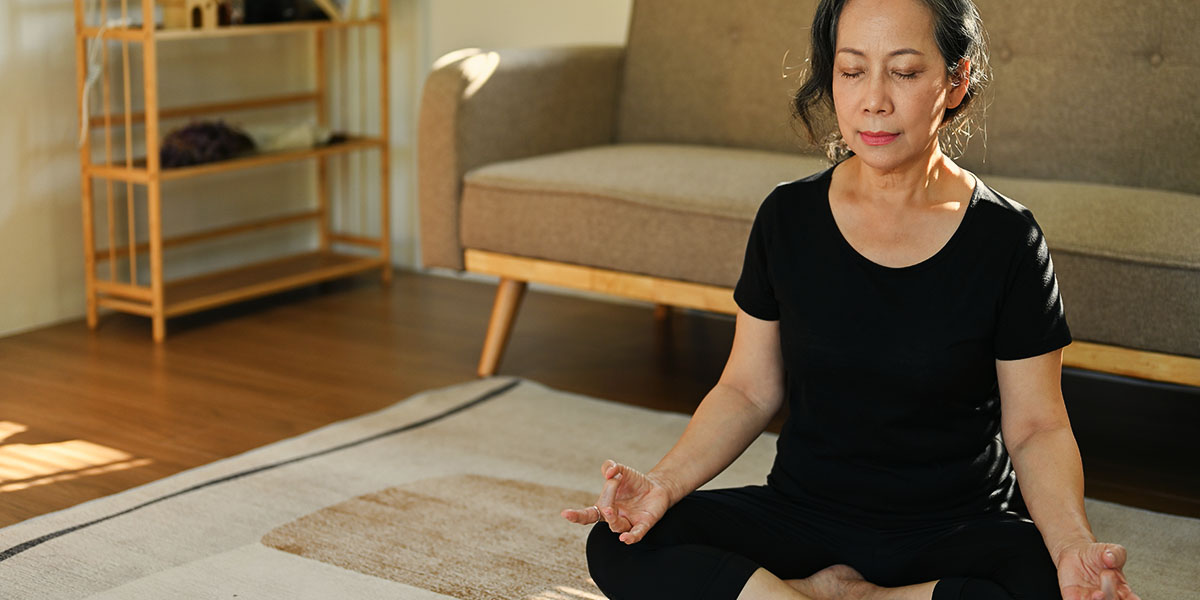Ending a marriage when you’re past 55 presents unique challenges, especially when it comes to your personal finances.
4 ways to stay happy and healthy in retirement
You may be surprised to learn that retirement can be hazardous to your health. But resetting just a few habits can help you keep well.

It’s no secret that retirement changes your life. Even if you’re moving to part-time or becoming a consultant, your schedule will never be the same. Retirement could chip away at those healthy habits you’ve worked so long to develop. Or, it could give you the chance to make some new ones.
“You can use anything as an opportunity to embrace health and wellness,” says personal trainer and author Kathleen Trotter. “And you can use anything as an excuse. You have the opportunity to make the next 20 to 40 years the best ones you’ve ever had.”
Retirement is a watershed moment. Try these four tips to seize the moment and build healthy physical and financial habits.
1. Get moving during the day
Without that active commute or those lunchtime walks, you could find yourself becoming increasingly sedentary. Research shows that new retirees initially reported more leisure-time physical activity. But their activity levels eventually tapered off.
Instead of letting that happen, make movement a habit. Use a fitness tracker to reach your step target. Try a mock commute: Start and end your day with a brisk walk or bike ride. Take your dog for an extra walk every day. Romp with your grandkids. The Centers for Disease Control in the United States has some useful tips.
2. Develop a new routine
If you’ve built your exercise routine around your work day, sticking with it post-retirement could be tricky. Instead, look for new foundations to build your routine on.
“If you know you’re really good with structure, you have to set yourself up with structure,” says Trotter. “So much of fitness is setting yourself up for success. So, look at your schedule and think about what the new touchstones in your life will be.”
You could plan your workouts around mealtimes, volunteering commitments or family activities. If you need a nudge, sign up for a class or sports league with a set schedule to follow.
3. Be mindful about mealtimes
Take stock of your eating habits.
“With awareness brings choice,” says Trotter. “In order to create healthy habits, you have to know where you’re starting.” Keep a food diary for a week. That way, you can identify less-than-healthy habits (like settling for tea and toast for lunch) and make a plan.
Rather than relying on convenience foods, try scheduling weekly meal preparation. Or try a healthy meal delivery service, suggests Trotter. With a service, you can always have food (almost) ready to eat.
Instead of skipping meals, work breakfast into your new morning ritual, and plan family time around meals together.
4. Talk to an advisor
Money-related stress can affect your heart, blood sugar and more.
To help avoid that stress, meet with a Sun Life advisor to prepare for your transition into retirement.
“Knowledge is power,” says Sun Life advisor Matt Wilhelm. “The more you know about your retirement income, the more secure you’ll feel in starting that journey.”
Advisors look at your assets and use conservative estimates to forecast what you have to live on. They’ll create a retirement plan that gives you options. And they’ll check in regularly to adjust your plan as needed.
Read more: Top 10 tips for a happy retirement
What does your perfect retirement look like? Taking a long, leisurely bike trip across Europe? Joining a softball league? Or simply keeping up with the grandkids? Whatever your vision, you’ll want to stay healthy and vital to follow your retirement dreams — wherever they lead.
This article is meant to provide general information only. It’s not professional medical advice, or a substitute for that advice.


